Changes in the works for NH site honoring Hannah Duston, woman known for killing Native Americans
| Published: 07-15-2020 9:17 PM |
BOSCAWEN, N.H. — As a national conversation erupts over how our country honors historic figures, the Hannah Duston Memorial in Boscawen will remain standing — albeit with a few changes.
State officials are in discussion with Abenaki leaders and academics about a number of additions to the site to make it more historically accurate. The initiative comes not long after the statue was vandalized in May with splatters of red paint, but it follows decades of indecision by the state on what to do with the monument to Duston, a white settler who is shown holding a hatchet and the scalps of Native Americans she killed.
Denise Pouliot, of the Cowasuck Band of the Pennacook Abenaki People, is helping to lead the project. Pouliot said she hopes the proposed additions, including a new statue honoring fallen Abenaki and other historical markers, will help tell a more complete story about Duston, New England’s Indigenous peoples and their relationship with colonial America.
“We want to share the New Hampshire experience,” said Pouliot, who also goes by the tribal title Sag8moskwa, which translates to “lead female speaker.”
According to historical accounts, Duston, a colonial woman from Haverhill, Mass., was captured with her infant daughter in a Native American raid in 1697 during the King William’s War. While it is uncertain what native group led the raid, most at the time were Abenaki.
After their capture, Duston, her daughter and other prisoners were taken 150 miles north to New Hampshire. Duston’s child was killed before they reached their destination in present-day Boscawen.
One night, Duston and two other prisoners were said to have killed and scalped 10 of their captors, eventually making their way back to Boston. Duston is believed to have brought the scalps with her.
The historical accuracy of Duston’s capture and escape has been questioned over the years, especially as subsequent accounts were embellished for dramatic effect. In her 2015 piece for the New Hampshire Historical Society’s journal, Laconia author Denise Ortakales recounts how Duston evolved into an instrument of American propaganda.
Article continues after...
Yesterday's Most Read Articles
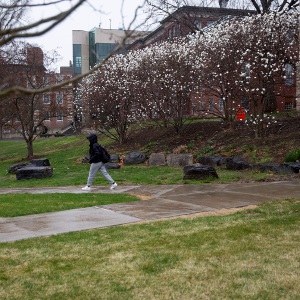 Zantop daughter: ‘I wish James' family the best and hope that they are able to heal’
Zantop daughter: ‘I wish James' family the best and hope that they are able to heal’
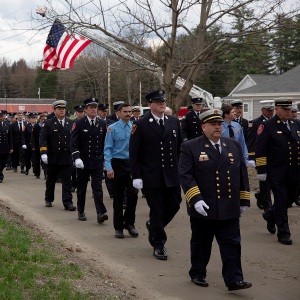 Crowd turns out to honor late Ascutney Fire Chief Darrin Spaulding
Crowd turns out to honor late Ascutney Fire Chief Darrin Spaulding
 A Life: For Kevin Jones ‘everything was geared toward helping other people succeed’
A Life: For Kevin Jones ‘everything was geared toward helping other people succeed’
 Pick a sport and Pete DePalo’s has probably officiated it over the past 40-plus years
Pick a sport and Pete DePalo’s has probably officiated it over the past 40-plus years
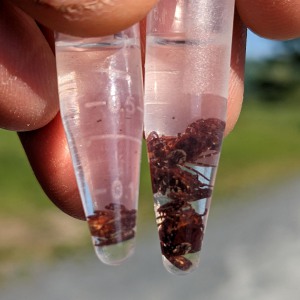 Out & About: Vermont Center for Ecostudies continues Backyard Tick Project
Out & About: Vermont Center for Ecostudies continues Backyard Tick Project
“After the Civil War, she became the poster child for Indian removal, justifying western expansion,” Ortakales wrote in the piece.
In 1874, New Hampshire erected a statue of Duston on an island at the confluence of the Contoocook and Merrimack rivers, thought to be the site where she was held prisoner. Duston stands holding a hatchet in one hand and a tangle of scalps in the other.
The statue is the first built to honor an American woman, as well as the first publicly funded statue in the state. A handful of other memorials across New Hampshire and Massachusetts are also dedicated to Duston, including a statue in Haverhill.
For decades, opponents of the statue have criticized it as a gratuitous, one-sided depiction of the otherwise complicated history between Native Americans and the colonies. New Hampshire considered making changes to the site as recently as 2013, though the project ultimately fell through.
“The past conversations, however heated they were, always kind of ended up with ‘This site needs to be added to rather than subtracted from,’ ” said Andrew Cushing, Director of Historic Sites for the state of New Hampshire.
Controversy surrounding the statue has made the site the occasional target of vandalism — the latest taking place in May when the statue was marked with red paint, which has yet to be cleaned up.
While the Department of Parks of Recreation does not keep vandalization records on Duston, Cushing said it happens about every three years. The paint will likely be washed away later this month, which Cushing said will cost around $2,500.
Apart from the paint, the statue is visibly weathered: Duston is chipped in several places, and faint ghosting of old graffiti tags is still visible. The statue’s nose has been shot off and replaced at least twice.
This cycle of vandalism was part of what inspired Pouliot and others to push for changes to the site, she said. Not long after the incident in May, University of New Hampshire anthropological archeologist Megan Howie and assistant professor of history at Williams College Christine DeLuci reached out to Pouliot about the project. The three then took their proposal to the state.
In June, they held a conference call to discuss what to do with Duston, which included Cushing; Pouliot; Director of New Hampshire Division of Historical Resources Ben Wilson; and Pouliot’s husband, Paul, who goes by the tribal title of Sag8mo, which means “lead male speaker.”
The group intends to keep the statue of Duston on site but to incorporate other historical elements about the Abenaki people and New Hampshire into the area.
“As a tribe, we feel in order to have a common future you have to have a common past,” Pouliot said. “And this is a way to achieve a common past.”
While exact plans for the project have not been finalized, the group is considering adding another statue for fallen Abenaki, as well as educational information on the Merrimack and Contoocook rivers and the old railroad track that runs across from the island.
The team may also make cosmetic and recreational changes to the site to make it more welcoming to visitors. This could include adding public seating, a canoe or kayak launch and touching up the area with natural landscaping, Pouliot said.
“We want it to be a park of the people, not just the park of Hannah,” she said.
Meanwhile, Haverhill is debating the future of its own statue of Duston. Earlier this month, a resident asked the City Council to relocate the statue, though ultimately no action was taken. The statue was vandalized last week with the words “Haverhill’s own monument to genocide” in chalk.
While the Boscawen project is still in its early stages, Pouliot said it is making meaningful steps forward. The New Hampshire Commission on Native American Affairs, of which Pouliot is a member, voted to support the project last week.
The team is still waiting to reach a formal agreement with the state.
Pouliot said she hopes the additions will help New Hampshire stand united in its history at a time when many states are divided.
“We may disagree with a lot of Hannah’s story, but she still has a place in history,” Pouliot said.

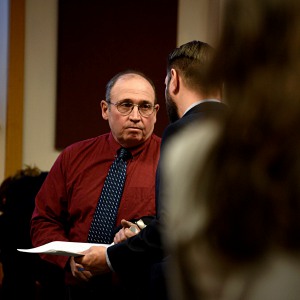 Former principal of South Royalton School released from prison
Former principal of South Royalton School released from prison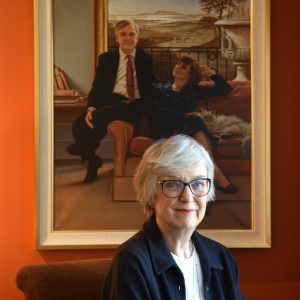 Upper Valley residents among advocates for NH aid-in-dying bill
Upper Valley residents among advocates for NH aid-in-dying bill 
